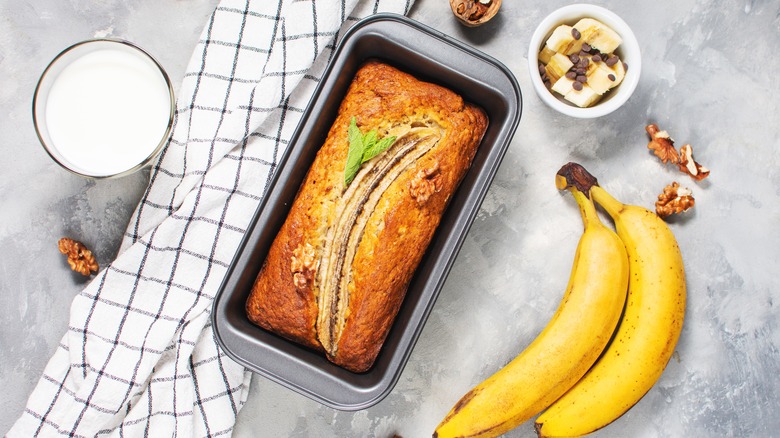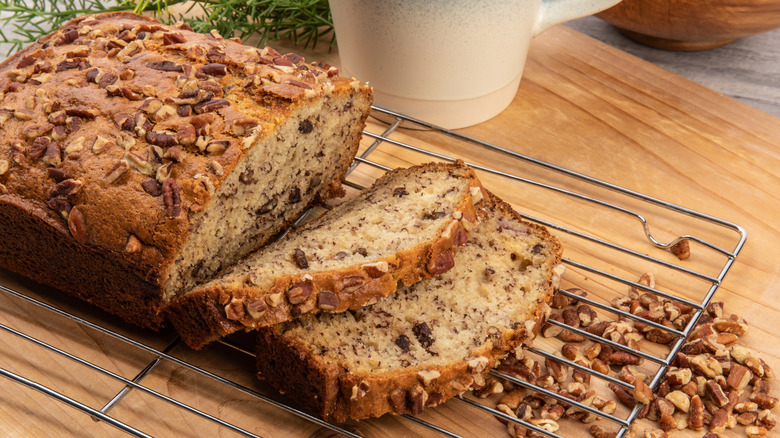The Last-Minute Mistake That Causes Soggy Banana Bread
We've all been there: The bunch of bananas you bought only a few days ago is already browning. Fortunately, it's unlikely that you'll need to toss them out; browned bananas may even be a blessing in disguise. As long as the fruits still smell alright and aren't oozing any strange juices, there are plenty of ways to use overripe bananas. If you love breakfast-ready baked goods, there's an obvious answer: Make banana bread.
Moist, sweet, and appetizing on its own or paired with a fresh cup of coffee, banana bread is a classic treat. Unlike standard loaves of bread, this fruit-based one is quick to whip up. That's right, no sitting around and waiting for dough to rise. However, as easy as it is to make, there are still common banana bread mistakes you'll want to avoid. One particularly important step that even experienced bakers sometimes skip comes after you remove the loaf from the oven.
If you've ever pulled steaming banana bread out of the oven only for it to turn soggy, chances are you let it sit in the pan for too long or sliced it while it was still hot. Worse yet, wrapping up a steamy, hot loaf might cause it to mold, ruining your stress-free breakfast plans for the week. The good news is that you can easily avoid these banana bread mishaps by letting the bread cool properly. All you need is time and a cooling rack. Trust us, perfect banana bread is worth waiting for.
Leave banana bread to cool on a wire rack
While it's tempting to cut into a loaf of fresh banana bread as soon as it's baked, you shouldn't. No matter how delicious it smells or looks, a little patience goes a long way in achieving the ideal texture; the last thing you want is soggy bread. Besides, if you prefer a warm slice of banana bread, you can always reheat it in the oven later to enjoy it hot.
For firm bread that's appetizingly moist, remove the loaf from its pan and place it on a wire cooling rack for at least 15 minutes. An hour is best before slicing, while two is safest before storage — any sooner and condensation could cause it to mold faster. This cooling process is an essential part of baking, as molecular changes still occur inside bread even after it comes out of the oven. In particular, starch re-crystalizes in the crumb structure so the bread firms up and slices better without losing shape. At the same time, the loaf expels moisture as its crust hardens nicely – think of how banana bread steams after baking. Allowing it to sit in a hot pan for too long causes condensation to form, and the bottom and sides of the loaf will soak it up until the bread is too moist. Instead, the cooling rack elevates the loaf so it's exposed to air evenly on all sides. By taking the time to let it cool fully, you'll be left with banana bread that's delightfully soft — not soggy.

